Chogha Zanbil: Huge Ancient Still Existing Ziggurat Dedicated To God Inshushinak
Angela Sutherland - AncientPages.com - In the local dialect, the Chogha (also known as Tchogha) means abnormal hills, and “Zanbil” means the basket, and since this site was in the form of a reverse basket before drilling, they called it Chogha Zanbil. It was also referred to as the trash hill
The structure is an ancient still existing ziggurat located in the province of Khuzestan in Iran. This impressive structure, estimated to be about 3,000-years-old belonged to the Elam civilization that ruled 3500 BC.
Chogha Zanbil constitutes the remains of Dur Untash City (or the City of Untash, in Elamite), and it is situated not far from the city of Susa, dated back to 4000 BC. The city was under the reign of the Babylonian, Persian, and Greek Empires.
There was once a large architectural complex that included a huge stepped pyramid-like temple (ziggurat) dedicated to the Sumerian god Inshushinak, one of the major gods of the Elamites and the guardian deity of Susa.
Some scholars speculate, based on a large number of temples and sanctuaries at Chogha Zanbil, that Untash-Napirisha attempted to create a new religious center (possibly intended to replace Susa) that would unite the gods of both highland and lowland Elam at one site.
Kneeling Bull holding spouted vessel, Proto-Elamite; Susa, Iran; Around 3100-2850 BCE. Image credit: iranchamber.com
The entire complex consists of the magnificent Chogha Zanbil ziggurat (the largest structure of its kind in Iran, originally 53 meters high), 13 temple buildings, of which only four are well preserved, and three palaces.
The ziggurat’s irregularly shaped outer wall extends approximately 3,900 by 2,600 feet (1,200 by 800 meters) around the inner sanctum. The square base of the ziggurat, 344 feet (105 meters) on each side, was built mainly of brick and cement. It now stands 80 feet (24 meters) high, less than half its estimated original height. Thousands of bricks that were never used and only left at one side are the reason for believing that the king had construction plans to build 22 temples but unfortunately, he was not able to finish his project.
For a long time, the place was unknown to the outside world, but finally, the ziggurat was accidentally discovered in 1935 by British Petroleum during an oil searching project.
First known archaeological studies of the site were conducted in the late 1930s. Later, between 1946 and 1962 excavations were carried out by the archaeologist Roman Ghirshman.
The monuments were decorated with glazed baked bricks, gypsum, and ornaments of faïence and glass. The ziggurat was once topped with a temple, and some of the bricks had Elamite cuneiform inscriptions on them and inscribed by hand. What distinguishes Ziggurat Dur Untash from other ziggurats in Mesopotamia is that in them, the upper floors were built on the lower floors.
The central ritual section of the ziggurat had 7 portals and there were 7 sacrificial places in front of the southeastern staircase. In one of the palace ruins, archaeologists found five underground tombs with precious items and the remains of four cremated bodies. The Elamites traditionally buried their dead, and the reason for the cremation is unknown. Glazed terracotta statues depicting bulls and winged griffins guarded the entrances to the ziggurat.
The ancient artifacts unearthed at the site include several bull sculptures of Inshushinak and a collection of Middle Elamite cylinder seals.
The ziggurat is considered to be the best-preserved example in the world. In 1979, Chogha Zanbil became the first Iranian site to be inscribed on the UNESCO World Heritage List.
Written by A. Sutherland - AncientPages.com Staff Writer
Copyright © AncientPages.com All rights reserved. This material may not be published, broadcast, rewritten or redistributed in whole or part without the express written permission of AncientPages.com
Expand for referencesMore From Ancient Pages
-
 Virginia’s Mysterious Vault With Remarkable Secret Ancient Documents Still Raises Many Questions
Featured Stories | Oct 17, 2024
Virginia’s Mysterious Vault With Remarkable Secret Ancient Documents Still Raises Many Questions
Featured Stories | Oct 17, 2024 -
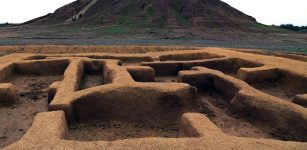 Climate Change May Have Impacted The Rise And Fall Of Middle Eastern Civilizations
Archaeology | Jan 19, 2023
Climate Change May Have Impacted The Rise And Fall Of Middle Eastern Civilizations
Archaeology | Jan 19, 2023 -
 New Genes May Explain Why Humans Got Such Big Brains
Archaeology | Jun 2, 2018
New Genes May Explain Why Humans Got Such Big Brains
Archaeology | Jun 2, 2018 -
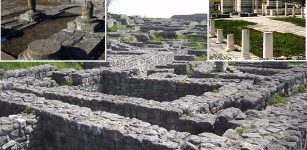 Pliska: Ancient City Ahead Of Its Time With Secret Underground Tunnels, Sewage And Heating Systems
Featured Stories | May 22, 2017
Pliska: Ancient City Ahead Of Its Time With Secret Underground Tunnels, Sewage And Heating Systems
Featured Stories | May 22, 2017 -
 Dinosaurs Were On The Up Before Asteroid Downfall – Study Finds
Archaeology | Dec 8, 2022
Dinosaurs Were On The Up Before Asteroid Downfall – Study Finds
Archaeology | Dec 8, 2022 -
 Ancient Bayanihan Tradition Of The Filipino People: Villagers Move Your Entire House Including Walls And Roof
Ancient Traditions And Customs | Sep 6, 2018
Ancient Bayanihan Tradition Of The Filipino People: Villagers Move Your Entire House Including Walls And Roof
Ancient Traditions And Customs | Sep 6, 2018 -
 Evidence Of The Moon-Eyed People – More Clues – Part 2
Ancient Mysteries | Dec 29, 2019
Evidence Of The Moon-Eyed People – More Clues – Part 2
Ancient Mysteries | Dec 29, 2019 -
 Early Bantu Speakers Crossed Through The Dense Central African Rainforest 4,000 Years Ago
Archaeology | Aug 2, 2022
Early Bantu Speakers Crossed Through The Dense Central African Rainforest 4,000 Years Ago
Archaeology | Aug 2, 2022 -
 Unique Early Alemannic Chamber Grave Discovered In Gerstetten, Germany
Archaeology | Sep 20, 2024
Unique Early Alemannic Chamber Grave Discovered In Gerstetten, Germany
Archaeology | Sep 20, 2024 -
 Medieval Burials Discovered Under London’s Westminster Abbey
News | Sep 24, 2015
Medieval Burials Discovered Under London’s Westminster Abbey
News | Sep 24, 2015 -
 9,600-Year-Old Permament Settlement And Daily Tools Discovered In Turkey
Archaeology | Sep 2, 2022
9,600-Year-Old Permament Settlement And Daily Tools Discovered In Turkey
Archaeology | Sep 2, 2022 -
 Has An Unknown Ancient ‘Israel Silk Road’ Been Discovered?
Archaeology | Jan 20, 2023
Has An Unknown Ancient ‘Israel Silk Road’ Been Discovered?
Archaeology | Jan 20, 2023 -
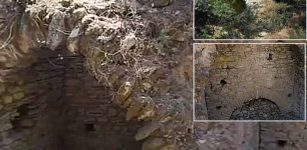 Colosseum-Like Structure Unearthed In 2700-Year-Old Ancient City Of Mastaura
Archaeology | Aug 22, 2020
Colosseum-Like Structure Unearthed In 2700-Year-Old Ancient City Of Mastaura
Archaeology | Aug 22, 2020 -
 Mystery Of The Horrible ‘Thing’ Found In A Dominican Monastery
Featured Stories | Sep 4, 2023
Mystery Of The Horrible ‘Thing’ Found In A Dominican Monastery
Featured Stories | Sep 4, 2023 -
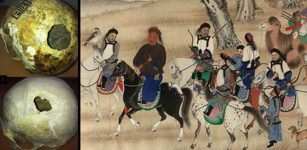 Siberia Had A Major Skull Surgery Center 2,500 Years Ago
Ancient History Facts | Jul 19, 2019
Siberia Had A Major Skull Surgery Center 2,500 Years Ago
Ancient History Facts | Jul 19, 2019 -
 Extraordinary Viking Boat Burial Of Two People Unearthed In Central Norway
Archaeology | Nov 20, 2019
Extraordinary Viking Boat Burial Of Two People Unearthed In Central Norway
Archaeology | Nov 20, 2019 -
 Legendary Helike – Uncovering Lost City of Poseidon
Civilizations | Dec 19, 2018
Legendary Helike – Uncovering Lost City of Poseidon
Civilizations | Dec 19, 2018 -
 Joseph Pujol – The Professional Farter Who Entertained People
Featured Stories | Jan 29, 2020
Joseph Pujol – The Professional Farter Who Entertained People
Featured Stories | Jan 29, 2020 -
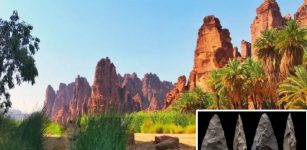 ‘Green’ Saudi Arabia Was Home To A 350,000-Year-Old Human Settlement
Archaeology | May 18, 2021
‘Green’ Saudi Arabia Was Home To A 350,000-Year-Old Human Settlement
Archaeology | May 18, 2021 -
 Mysterious Viking Code Jötunvillur Deciphered By Norwegian Researcher
News | Feb 24, 2014
Mysterious Viking Code Jötunvillur Deciphered By Norwegian Researcher
News | Feb 24, 2014



